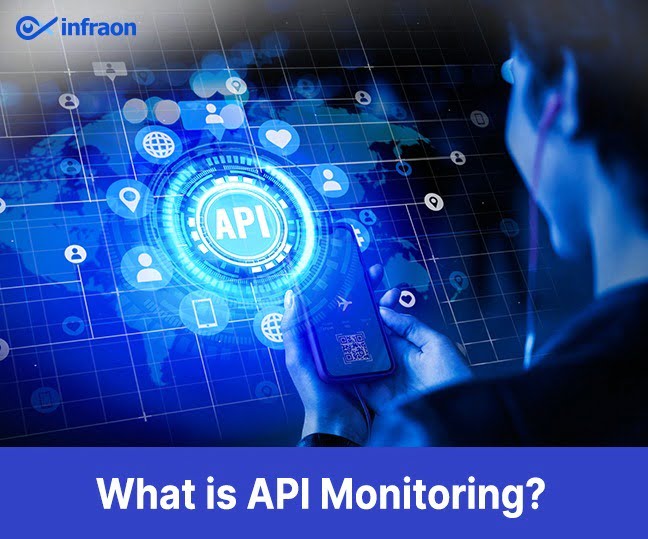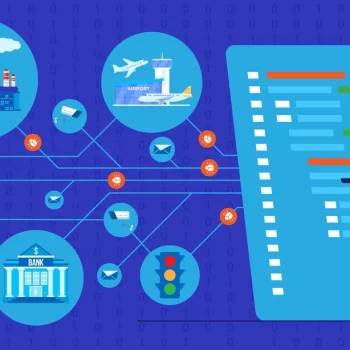What is API Monitoring?
API monitoring is a holistic approach to monitoring the availability, responsiveness, and performance of application programming interfaces (APIs). It helps identify application failures, dependent services or website failures, and outages or poor performance of API calls.
How does API monitoring work?
API monitoring uses a remote computer to send requests to the API. The computer evaluates API responses for speed, content, and response code. If the response is not as expected, the monitor service will log an error. Usually, the surveillance service will immediately arrange for a second test from another surveillance agency. If this test also fails, the monitoring service sends an alert to notify the API provider or user that it is not working properly.
Types of API Monitors
- Basic API Monitors: A basic API monitor tests a single API call. A checkpoint computer sends requests and receives responses. A probe measures the time between sending a request and receiving a response, checking the response for a success code and possibly checking the response for a specific string.
- Multi-step API Monitors: Multi-step API monitors audit complete API interactions, not just single responses. The API can respond well in one response, but how does the API behave in subsequent calls that need to reuse values such as product IDs, geolocations, user responses, etc.? What if it requires authentication or contains a page redirect? Multi-step API monitoring inspects the response, extracts the value, and performs a single call while building the next request.

API Monitoring Best Practices
- Validate Functional Uptime: Simply monitoring the availability of API transactions involving data exchange is not enough. You should test various verbs such as CRUD (create, read, update and delete) services against all application resources exposed through your API to ensure they are working.
Using holistic monitoring tools with tiered API monitors is one way to improve API availability along with data reliability. Synthetic monitoring only uses a defined set of API calls. Therefore, the actual traffic may differ from the synthetic monitoring input.
- Never Forget API Dependencies: There may be other internal and/or external APIs depending on the inputs or outputs of your application’s API. Even if you implement an API monitoring tool or strategy, other APIs may or may not have it. Therefore, you should also monitor the behaviour of third-party APIs that your application relies on.
- Adopt Automated Testing Into API Monitoring: The CI/CD and DevOps movement drives continuous and automated testing. You can define a clear AWS monitoring strategy for each stage of your CI/CD pipeline and perform regular monitoring on a regular basis. This cycle improves prototype API performance at each stage of the code release process.
Key API Metrics Should You Monitor
- CPU and Memory Usage: High CPU and memory utilization on your API host server is a sign of an overloaded virtual machine, container, or API Gateway node. This slows down API performance.
You can measure the CPU utilization of the cluster that hosts your application’s API code and the number of processes waiting to run (also known as CPU utilization or run queue size). Memory can be easily measured as a percentage of available memory.
- API Consumption: API consumption is measured as requests per minute, requests per second, or queries per second. You can combine multiple API calls into a single API call and use flexible pagination schemes to reduce API consumption.
Synthetic monitoring is not intended to measure consumption rates, as it emulates individual transactions rather than monitoring total transaction volume. Telemetry instrumentation to measure and report consumption rates is typically built into the API design from the beginning or monitored by application performance monitoring (APM) tools.
- Response Time: Response time is a difficult metric to measure with third-party APIs, as latency records can be cumulative for both problematic slow endpoints and the network itself. The best way to monitor latency is with an API monitoring tool that can report network latency and API response time separately.
The size of the payload (the JSON file sent to or retrieved from the API) has a large impact on latency. Hence, synthetic API monitoring should be performed with both small and large payloads.
- Error Rate: Error rates (such as errors per minute and error codes) provide detailed information for tracking individual API issues.
An integrated monitoring tool can compare the results of the tests against the expected values to check the accuracy of API responses beyond the status code.
Why is API monitoring important?
API monitoring collects and analyzes metrics that describe key aspects of your application’s performance. This gives developers a better understanding of the health and efficiency of the APIs they use.
In addition to performance monitoring, the team may want insight into how developers are using API. This will give you a better understanding of the areas that need improvement or updating.
The API monitoring tool is especially important when using third-party components. Payment services, customer relationships management services such as Salesforce, and internal services are provided by other teams within your organization for specialized internal processes. The growing popularity of these highly modular third-party services has increased the need for better monitoring solutions. Additionally, API monitoring can provide insight into how business functions depend on APIs and the impact of using those on business goals and key performance indicators (KPIs).
Why Infraon for API Monitoring?
Infraon ITIM prevents broken APIs from impacting your IT infrastructure by making it easy to validate API response data. It automatically identifies trends and patterns with built-in intelligent alerting and escalation mechanisms.
Conclusion
If your API is critical to your business or its customers, it must be monitored. Businesses should also test any third-party APIs they rely on. A failure or slow performance of a third-party API can hurt your brand just as badly as your own product. Customers don’t care who owns the API. They just want the product to work.













